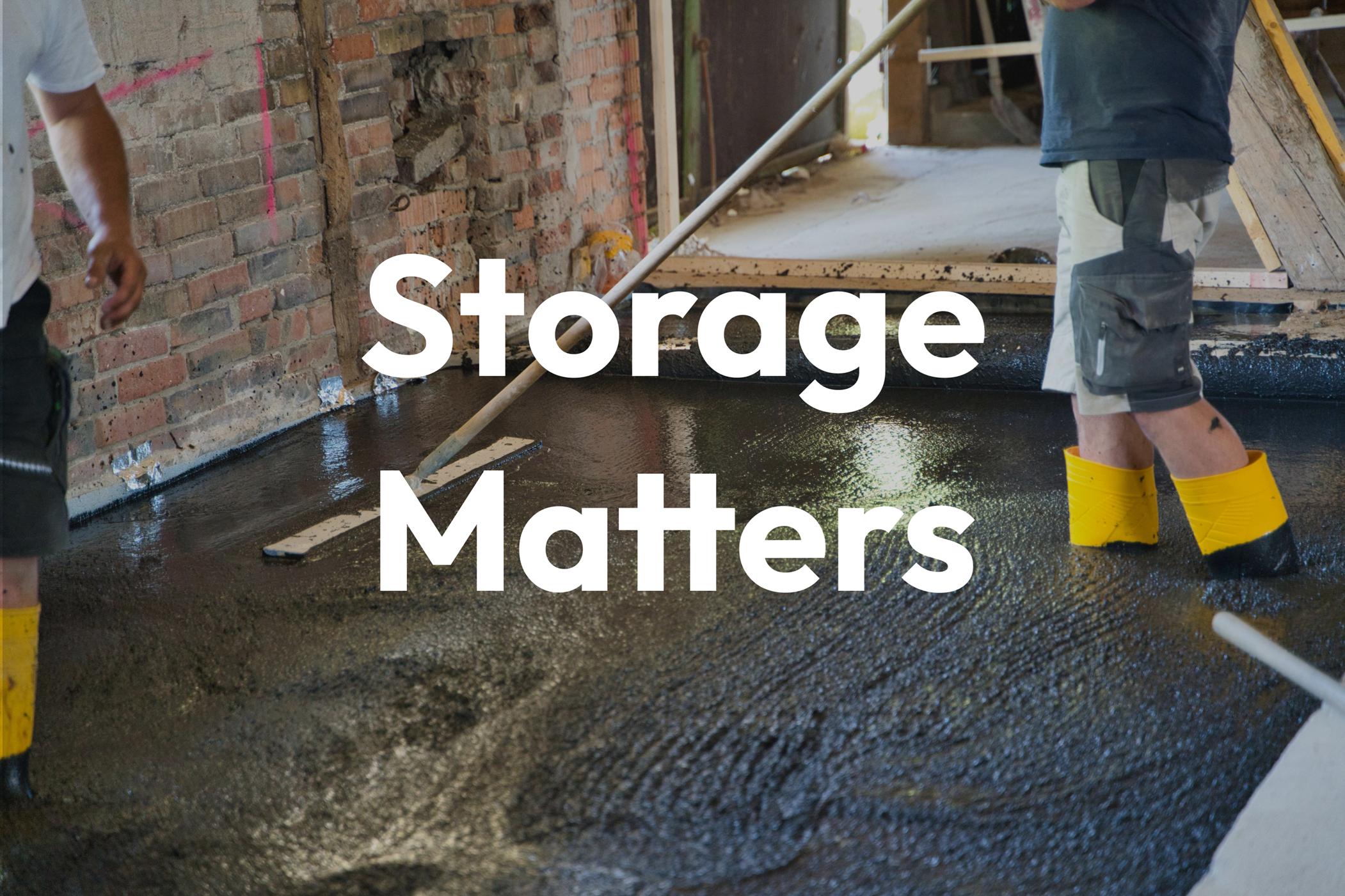#StorageMatters: 5 arguments for carbon in concrete
The world urgently needs reliable, scalable, and verifiable carbon removal solutions. While carbon capture technologies are advancing rapidly, the question of where and how to store captured carbon remains a major bottleneck. Without permanent storage, captured CO₂ risks returning to the atmosphere, undermining the climate benefit.
Most climate models rely on geological carbon storage, injecting CO₂ deep underground, to reach net-zero targets. Yet even full global deployment of geological storage would reduce global temperatures by only about 0.7 °C. Long-term reliability, cost, and monitoring remain major challenges.
Based on current research, the Earth can safely store about 1,460 gigatonnes (GT) of CO₂ underground in sedimentary rock formations. However, the built environment offers an additional, and largely untapped, opportunity: it has the potential to store more than 16 GT of CO₂ every year.
To truly reverse climate change, carbon removal must go hand in hand with permanent carbon storage. Capturing CO₂ is only half the solution, if the stored carbon leaks back, the impact is lost. Permanence determines whether carbon removal genuinely contributes to reversing climate change or merely delays it.
That’s why storage solutions that are durable, traceable, verifiable, and globally scalable are essential to the credibility of the carbon market.
At ecoLocked, we believe the built environment can become a global carbon sink. By embedding ecoLocked Materials, which contain highly stable carbon into concrete, we transform one of the world’s most widely used materials into part of the solution.
Below are five key arguments showing how our carbon-in-concrete approach addresses the need for secure, long-term carbon storage.
1. Durable carbon storage, low risk of reversal
Carbon storage in concrete is among the most durable removal methods, with permanence exceeding 1,000 years.
Many storage methods face reversal risks through oxidation, fire, microbial activity, or environmental disturbance, all of which can release stored carbon within decades.
Stable form of carbon, with its aromatic structure, resists both microbial and chemical degradation. When incorporated into concrete, the carbon becomes physically encapsulated within a mineral matrix, protected from oxygen, moisture, and microbes.
Even the less stable (“labile”) fraction of the carbon becomes gradually mineralized in the concrete’s high-alkaline, calcium-rich environment, forming stable carbonates over time.
This combination ensures storage stability over millennia, with an effectively negligible reversal risk on human or even geological timescales. Unlike nature-based solutions, concrete embedding eliminates exposure to fire, weather, and biological decay.
2. Storage in long-lived infrastructure
Concrete structures typically last 50–100+ years, naturally aligning with the century-scale permanence needed for carbon removal.
At the end of a building’s life, demolition waste often becomes aggregate for new concrete, keeping the embedded carbon intact and retaining its stored carbon through multiple reuse cycles.
Even if concrete ends up in landfill, the carbon remains sequestered within the mineral matrix, safe from environmental degradation.
3. Measurable and verifiable storage
The amount of sequestered carbon added to concrete can be precisely quantified at production and tracked throughout the building’s life cycle.
This makes carbon accounting transparent and auditable, meeting the rigorous standards required for credible carbon crediting systems.
Uncertainty in permanence is also dramatically lower than in nature-based storage, where measurement and verification remain major challenges.
4. Scalability and co-location with existing infrastructure
Concrete is one of the most widely produced materials on Earth, making it a natural platform for carbon storage at scale.
Because it fits directly into the existing construction value chain, no new land use, monitoring regimes, or biological maintenance are needed.
This co-location with industrial infrastructure provides a ready, low-risk carbon sink for biogenic carbon forms, leveraging existing processes rather than inventing new ones.
5. Complements other carbon removal pathways
Using concrete as a carbon sink diversifies the global carbon removal portfolio, reducing systemic risk.
It provides a geological-like storage route for biogenic carbon, bridging the gap between biological capture and mineral sequestration.
Carbon-in-concrete complements other storage approaches, helping build a balanced and resilient carbon storage system.




